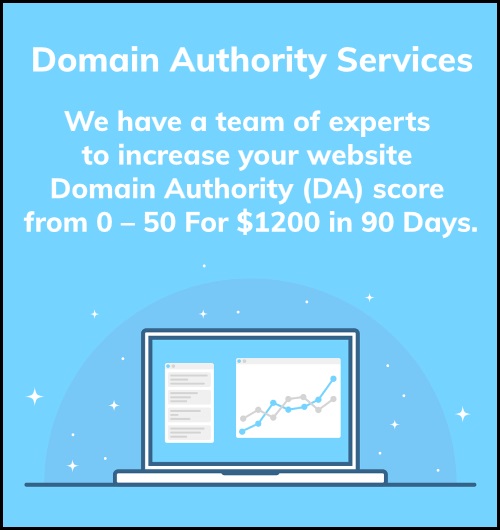If you’re an engineer looking to better understand financial management, you may be wondering how to cost a project. Knowing the necessary steps for accurately estimating and budgeting for an engineering project is key in delivering successful outcomes. You will need reliable forecasting tools and great communication skills between clients and stakeholders if you want your projects to stay on track and make money.
In this blog post, we’ll explore the basics of financial management in engineering and how to cost a project.
1. What is financial management in engineering?
Financial management in engineering is the management and assessment of financial resources to ensure that investments into engineering research and development yield maximum value. It is crucial for companies working within the engineering field to remain competitive and develop products at the cutting edge of technology.
This involves assessing cash flows, forecasting income and expenditure, managing budgeting cycles, developing pricing strategies, and creating long-term targeted savings plans.
Financial management can be daunting, but when done with an eye toward progress and growth, it provides businesses with valuable insight into how they should invest their time and capital to drive success further in multiple aspects of the business.
2. Steps for costing a project
Now that you understand the benefits of cost management, let’s look at how to cost a project. Below are the key steps for costing a project.
a. Establishing project goals and objectives
The first step in costing any project is establishing the goals and objectives. This will help ensure that everyone involved accurately understands what needs to be achieved to establish realistic budgets. It also helps identify potential risks or areas where additional resources may be needed before they become an issue.
b. Analyzing resources needed for tasks
Once the goals and objectives are established, the next step is analyzing resources needed for each task. This helps project managers identify what tools, materials and personnel are necessary to complete the job and in what quantities. Knowing this information allows project managers to accurately estimate the costs associated with tasks before they start so that budgets can be adjusted accordingly.
Breaking down projects into smaller tasks or milestones makes it easier to identify potential problems ahead of time and make adjustments if needed. Doing so also makes it simpler to track progress throughout the duration of the project as you’ll have a clear understanding of which activities have been completed and which remain outstanding.
c. Estimating costs for resources needed
Once you’ve identified the resources needed for each task, it’s time to estimate the costs associated with them. This involves researching market prices and reviewing current budgets to better understand what is available. Knowing the estimated cost of materials and personnel involved in the project allows you to budget accurately and identify potential areas where more money needs to be allocated or saved.
It’s also important to take into account indirect costs when estimating expenses, as these can add up quickly if not considered from the beginning. Examples include overhead costs such as insurance, taxes, utilities, advertising fees, etc., which are necessary but often forgotten until it’s too late.
d. Creating a cost management plan
The last step is creating a cost management plan. This involves setting up an effective system for monitoring costs and ensuring that they stay within budget throughout the duration of the project. It also includes understanding when additional resources are needed to prevent costly delays or mistakes.
2. Strategies for controlling costs during a project’s lifecycle

Once the project’s cost management plan is in place, it’s time to start controlling costs. Here are some strategies that can help organizations maximize cost efficiency and keep projects on track.
a. Developing a detailed timeline of activities with corresponding deadlines
Creating a timeline and setting hard deadlines are essential for controlling costs during any project’s lifecycle. It all boils down to good old-fashioned planning, which enables project teams to stay focused, organized and on track.
A detailed timeline helps prioritize the most important activities, while giving team members realistic expectations they can achieve. Deadlines provide clarity and help motivate team members by encouraging them to keep on task to ensure that objectives are met in a timely manner.
For teams juggling multiple projects simultaneously, timelines and deadlines are essential for staying budget-conscious during each iteration. Planning out scheduling details at the beginning of any project will be a major asset if costs must be monitored or managed more effectively throughout its duration.
b. Allocating resources appropriately
Another key cost-controlling strategy is allocating resources appropriately. Knowing which resources are needed and how much is necessary helps ensure that they’re allocated where they can be most effective. This means understanding team members’ skillsets to identify who is best suited for certain tasks and having an accurate list of materials or equipment needed to complete activities successfully.
By understanding the resources required for each task in advance, project managers can plan more accurately and allocate those resources accordingly before work begins. This helps prevent costly surprises during a project’s lifecycle, while ensuring that it stays on track with minimal disruption or delays.
c. Setting an appropriate budget
Setting an appropriate budget is essential for controlling costs during any project’s lifecycle. This involves understanding the goals and objectives of the project, as well as researching market prices to get a better idea of what it will cost to complete tasks successfully.
It also means having realistic expectations when setting budgets so that they’re not too low or too high – if your estimates are off, you could end up with costly mistakes or delays down the line.
An accurate budget helps teams stay within their allocated limits while achieving desired outcomes. Knowing how much money needs to be spent on each task enables organizations to identify areas where additional resources may be required without exceeding the budget.
d. Monitoring progress regularly
Monitoring progress regularly is another important cost-controlling strategy. This helps project managers stay on top of tasks and identify potential problems early on, allowing them to make adjustments before they become an issue. Monitoring also enables teams to track their costs more accurately so that budgets are kept in check throughout the duration of the project.
Regularly monitoring progress also ensures that team members remain motivated and accountable for their work, helping keep everyone focused on completing tasks efficiently and effectively without going over budget or running into delays due to lack of preparedness or planning.
e. Using cloud-based cost-tracking tools
One of the most efficient cost-controlling strategies is using cloud-based cost-tracking tools. These solutions enable project managers to monitor costs in real time from anywhere with an internet connection, allowing them to adjust as needed and stay within their budgets more easily.
They also provide valuable insights into spending patterns so that organizations can identify areas where additional resources may be necessary or where they can save money.
Using these tools provides project teams with a comprehensive view of their finances at any given moment, enabling them to better understand how their projects are progressing financially and make informed decisions that will keep costs in check, while providing great value to customers at the same time.
3. Benefits of having a good understanding of cost management
A good understanding of cost management is important for engineers as it helps them efficiently plan, control and monitor their projects. Below are some major benefits of having a good understanding of cost management.
a. Improved accuracy and reliability in estimating project costs
Understanding cost management is key to successful projects because it helps ensure improved accuracy and reliability in estimating project costs. Knowing the tools, techniques and strategies provides project managers with the knowledge they need to predict how much their projects will cost, right down to individual tasks.
This gives them a clear picture of potential risks and ways to prevent them, enabling them to manage cost-related stress, be comfortable dealing with whatever arises, and ultimately achieve results close to their project estimates.
In other words, good cost management means more efficiency and fewer surprises – something that everyone involved in the project can be happy about!
b. Prevention of cost overruns
Cost overruns are the bane of any project manager’s existence, yet they’re also common in business. An in-depth knowledge and understanding of cost management strategies can help mitigate this problem and prevent these potentially disastrous oversights.
An effective cost management plan can enable organizations to prioritize tasks, automate processes, and identify cost-saving measures from the initial planning stages of a project to the very end, ensuring that everything is on track and within the budget.
By proactively preventing cost overruns with well-honed cost management skills and strategies, organizations can save time, effort and money in the long run. All that it takes is a better understanding of managing costs!
c. Improved project scheduling
Accurately understanding and predicting costs is a major factor in effective project scheduling. Being able to anticipate the resources needed and plan accordingly helps ensure that projects are completed on time and within budget.
A good cost management strategy can help organizations more accurately set timelines, identify resource requirements, develop effective plans of action, allocate resources optimally, and track progress regularly, all while avoiding costly mistakes that result from lack of planning or preparation.
d. Enhanced customer satisfaction
Customer satisfaction is always a top priority in any business, and understanding cost management can help you deliver better customer experience.
Knowing the costs associated with each step of your projects allows you to set realistic expectations with customers and provide them with accurate information about delivery times and pricing.
This helps ensure that their needs are met, leading to improved customer satisfaction levels that increase loyalty – something that every organization should strive for.
e. Improved project performance
When cost management is done well, it can positively impact project performance. Organizations can allocate resources efficiently and effectively to maximize their projects’ value by anticipating and understanding the costs associated with each task.
Knowing where to invest time and money helps teams stay within budget while achieving desired outcomes. This leads to improved productivity, better results and more successful projects.
f. More effective risk management
Risk management is an increasingly important part of any effective business. However, having a good understanding of cost management can skyrocket your risk management efforts to the next level.
With cost management, businesses can look at their current costs and analyze the most effective systems for specific operations.
By thoroughly understanding their costs, firms can better plan for future projects by considering potential risks associated with certain initiatives.
This knowledge provides tremendous insight into minimizing those risks over time through more efficient operations and accurate forecasting. Developing a comprehensive view of cost management can help firms tackle unexpected financial risks and make better decisions. This will keep the company secure while providing opportunities for growth.
g. Increased revenue
In today’s competitive business world, increasing revenue is a top priority for any organization. Companies can optimize their resources more effectively and drive higher profits by making better-informed decisions and utilizing cost management strategies to their fullest potential.
Understanding the costs associated with each task involved in your project helps you create pricing models that maximize revenue without sacrificing quality or customer satisfaction.
This knowledge also gives businesses an edge when it comes to negotiating deals and setting prices, enabling them to get more out of every transaction, while providing great value to customers at the same time.
h. Optimal resource utilization
Having a better understanding of cost management can help you optimize the utilization of resources, leading to increased efficiency and improved overall performance.
With an engineer management master degree, professionals can better understand the costs associated with their projects and make more informed decisions regarding resource allocation.
This allows them to identify areas where they can save money without compromising on quality or performance, maximizing their resources, while keeping things within budget.
It also helps organizations make informed decisions about when it makes sense to outsource certain tasks or hire additional staff, ensuring that they don’t spend more money than necessary while still meeting their goals efficiently and effectively.
i. Improved strategic planning
Understanding cost management can help organizations develop more effective strategic plans. Cost forecasting allows companies to anticipate the costs associated with various activities, making better decisions about which projects are worth undertaking and which should be avoided or postponed.
By considering potential risks and rewards, businesses can craft well-informed strategies that maximize their investments while minimizing potential losses.
Understanding cost management also helps organizations understand the resources they need to achieve their goals. This includes understanding where additional capital is needed or when it makes sense to outsource certain tasks rather than hire extra staff – all crucial elements of any successful business strategy.
j. Improved decision-making
Ultimately, understanding cost management can improve decision-making and help businesses make the most of their investments.
By having a better knowledge of costs and resources, organizations can identify potential problems before they arise, allowing them to act quickly and avoid expensive mistakes in the future.
This helps ensure that decisions are made with a clear view of the bottom line, leading to improved efficiency, higher profits and long-term success for any company.
k. Drawbacks of poor cost management
On the other hand, poor cost management can have devastating effects on any project or organization. Here are some of the drawbacks of not having a good understanding of cost management:
i. Inaccurate budgeting and forecasting –
When an organization does not understand its costs and resources, it may set unrealistic budgets that lead to delays and overspending. This can result in costly mistakes during a project’s lifecycle and cause customer satisfaction issues due to missed deadlines or exceeded budgets.
ii. Unnecessary spending –
Poorly managed projects often waste money on unnecessary tasks or materials that could have been avoided with better planning. Without accurate estimates of costs associated with each task, organizations may spend more money than necessary, leading to decreased profits and overall project success.
iii. Lack of transparency –
One of the biggest dangers of poor cost management is a lack of transparency. This can occur when businesses do not track their costs accurately or keep stakeholders updated on the financial status of projects.
This lack of communication can lead to mistrust and conflict between team members and customers, ultimately damaging relationships and reputation.
iv. Ineffective resource utilization –
Another common issue caused by bad cost management is ineffective resource utilization. If an organization does not understand its costs, it may allocate resources inefficiently, leading to delays, disruptions, and wasted time and money.
Conclusion
Understanding cost management is essential for any successful project. It helps organizations create accurate estimates and budgeting, prevent cost overruns, improve resource utilization and decision-making, and increase revenue and customer satisfaction.
On the other hand, not having a good understanding of cost management can lead to costly mistakes that may negatively affect projects or businesses in the long term.
Overall, it’s clear that having a comprehensive knowledge of cost management is key to achieving success in any endeavor.
By taking the time to understand the tools, techniques and strategies associated with this field, managers can empower their teams with the information they need to stay on track and within budget, while delivering great value at the same time.
Tech Trends
Related posts
Leave a Reply Cancel reply
Hot Topics
Categories
- Ads (5)
- Animes (25)
- Artificial Intelligence (AI) (35)
- Augmented Reality (AR) (10)
- Automotive (9)
- Bitcoin (16)
- Blockchain (24)
- Business (244)
- Business Intelligence (3)
- Cloud Computing (23)
- Computer (128)
- Concrete Technology (1)
- Cryptocurrency (10)
- Cybersecurity (42)
- Data Science (9)
- Database (4)
- DevOps (6)
- Digital Marketing (76)
- Digital Workplace (14)
- Ecommerce (1)
- Education (28)
- Electric Vehicle (EV) (1)
- Electronics & Hardware (17)
- Entertainment (42)
- Fabrication (3)
- FAQ's (1)
- Finance & Marketing (47)
- Gadgets (35)
- Games (8)
- Gear (29)
- HTTPS (1)
- Industry (46)
- Information Technology (90)
- Internet (413)
- Internet of Things (IoT) (41)
- Job (25)
- Machine Learning (6)
- Marketing (92)
- Mobile Apps (21)
- Movies (11)
- Natural Language Processing (6)
- News & Trends (109)
- Programming (4)
- Science & Technology (235)
- Security (81)
- SEO (56)
- Services (36)
- Social Media (73)
- Software (99)
- Sports (1)
- Technology (306)
- Telecom (6)
- TikTok (5)
- Tours & Travels (9)
- Uncategorized (11)
- Virtual Reality (VR) (7)
- VoIP (4)
- Web Technology (42)
- Workforce (17)
- Workspace (6)



Stay connected